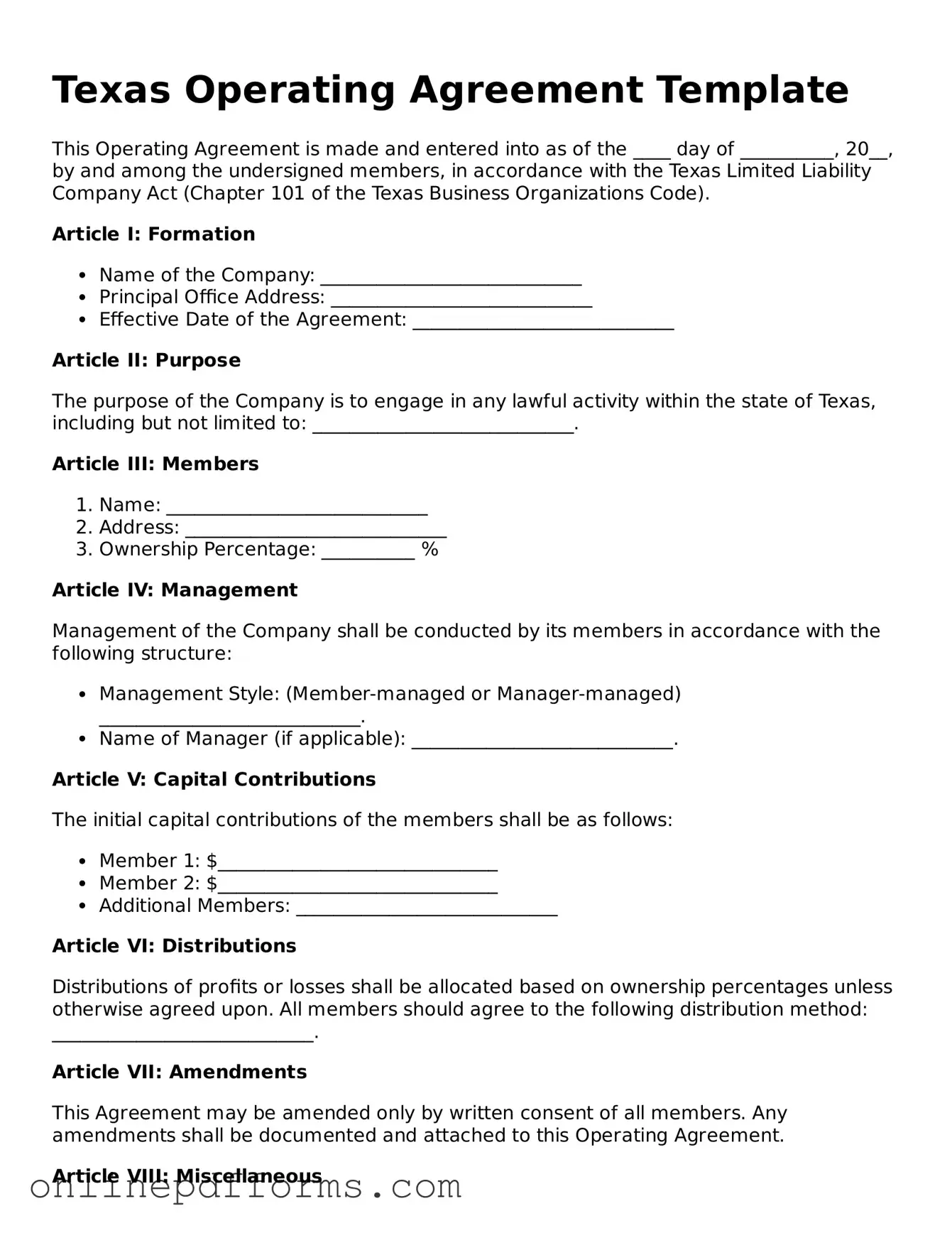The Texas Operating Agreement is similar to the Partnership Agreement. A Partnership Agreement outlines the terms and conditions under which partners operate a business together. Like the Operating Agreement, it specifies each partner's contributions, responsibilities, and profit-sharing arrangements. Both documents serve to clarify the relationship between parties and establish guidelines for decision-making, ensuring that all partners are on the same page regarding their roles and expectations.
Another document similar to the Texas Operating Agreement is the Bylaws of a corporation. Bylaws govern the internal management of a corporation, detailing the structure of the board, the process for holding meetings, and the rights of shareholders. Just as the Operating Agreement sets forth the rules for managing a limited liability company (LLC), Bylaws provide a framework for corporate governance. Both documents are essential for maintaining order and transparency within the respective entities.
The Shareholder Agreement is also comparable to the Texas Operating Agreement. This document outlines the rights and obligations of shareholders in a corporation. It addresses issues such as the transfer of shares, voting rights, and dispute resolution. Similar to the Operating Agreement, it aims to protect the interests of all parties involved and provides a clear roadmap for how the business will be managed and how conflicts will be resolved.
Lastly, the Joint Venture Agreement bears similarities to the Texas Operating Agreement. A Joint Venture Agreement is used when two or more parties collaborate on a specific project while maintaining their separate legal identities. It outlines each party's contributions, responsibilities, and profit-sharing. Like the Operating Agreement, it establishes a clear framework for cooperation, ensuring that all parties understand their roles and the terms of the partnership.
